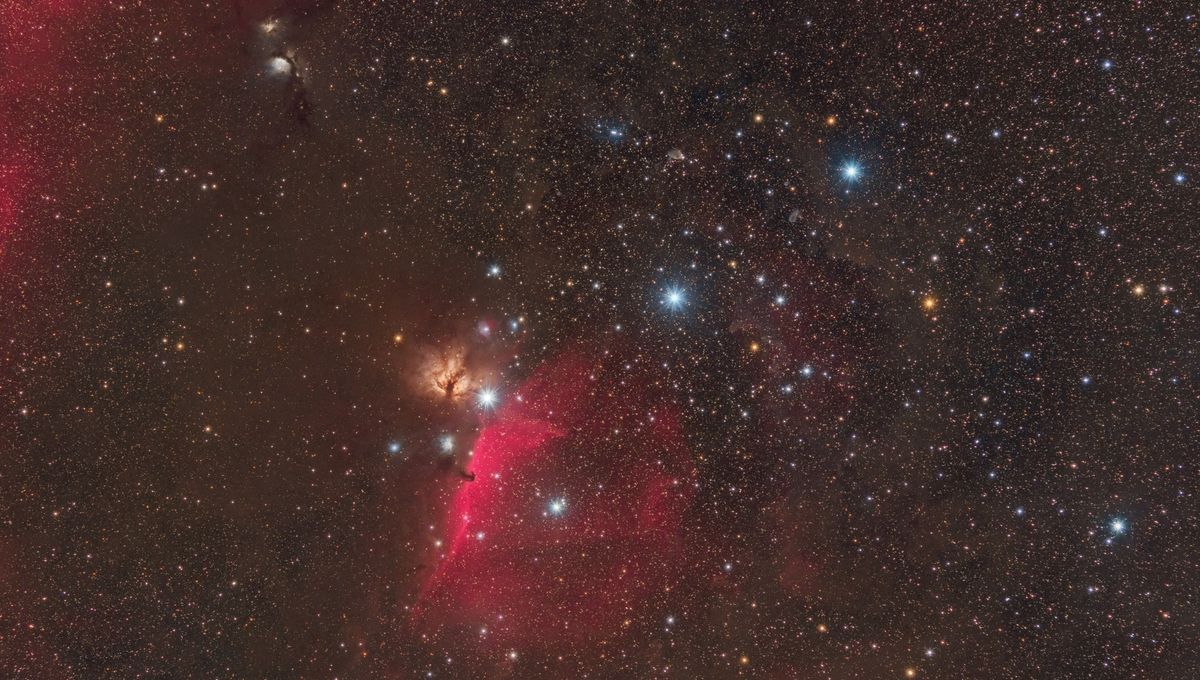
Orion is one of the best known constellations in the night sky. Its size and the brightness of its stars make it hard to miss, and its visibility throughout different months of the year have made it a celestial timekeeper for many civilizations. Part of the charm of this constellation is its snatched waist, made by three bright stars: Mintaka, Alnilam, and Alnitak. This is the famous Orion’s Belt.
What can you find in Orion’s Belt?
The three main stars in Orion’s Belt are hot, big, and extremely bright. They are a limelight compared to the firefly that would be our Sun. They are also not exactly three stars. Mintaka, which is the fourth brightest in the constellation, is actually a multiple-star system. Visually, it is the westernmost star in the belt. Its primary component is a bright triple system, with its main star being about 90,000 times more luminous than the Sun. It is orbited by a companion and by another binary system. It is a crowded area, located 1,200 light-years away.
On the other side of the belt, there is Alnitak. This is also a triple-star system. The primary is 21,000 times brighter than our Sun, and it’s 33 times as massive. It is so large that you could fit almost 4,200 Suns in its volume. The system is bathed in the nebulous brilliance of IC 343, an emission nebula known for the Horsehead Nebula that sits starkly in front of it. Alnitak also bathes the Flame Nebula in ultraviolet light, making it glow.
Last, but certainly not least, Alnilam – the central star of the belt. It is further away, about 2,000 light-years from us, so it’s slightly dimmer than several of the other stars in Orion. But up close, it would be a phenomenal sight. Estimates suggest that it is at least 275,000 times the brightness of our Sun, but it might be up to 832,000 times brighter. It has a mass between 40 and 44 times greater than that of our Sun and its surface is almost 5 times as hot.
How can you see Orion’s Belt?
Orion is visible from both hemispheres, but is best seen during the autumn and winter months (in the northern hemisphere) as it moves from east to west. The constellation will pass behind the Sun in May, June, and July. By late July and early August, it is possible to see Orion only just before dawn, when the belt is almost vertical above the horizon.
You can check Stellarium if you want to find Orion at your location tonight.
Source Link: Orion's Belt: What Is It and How To See It